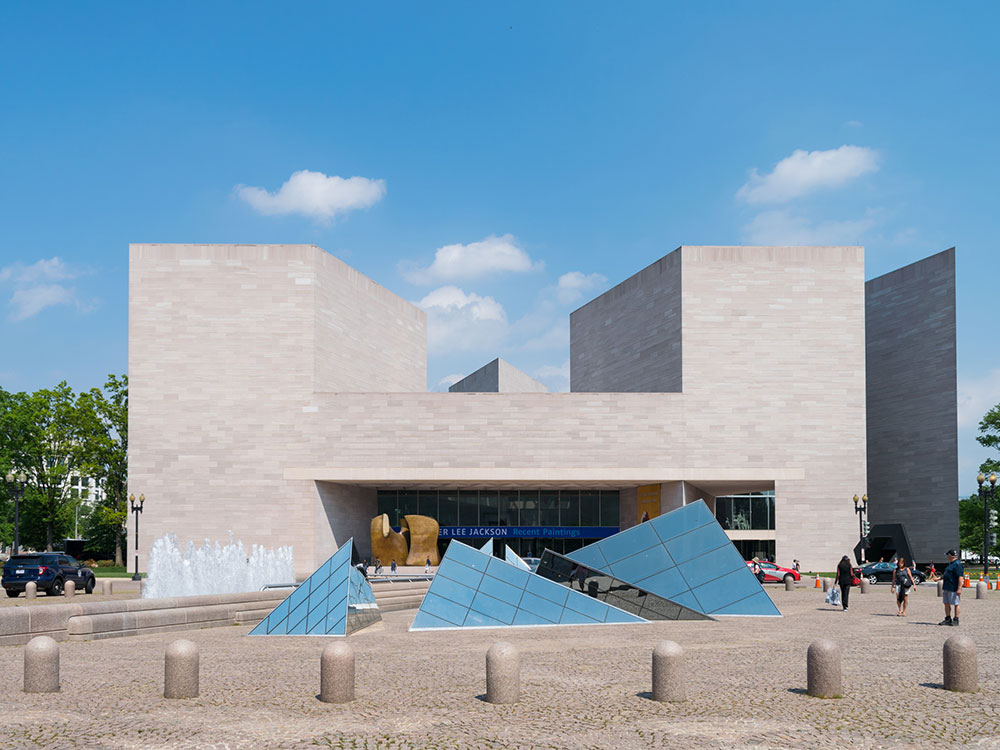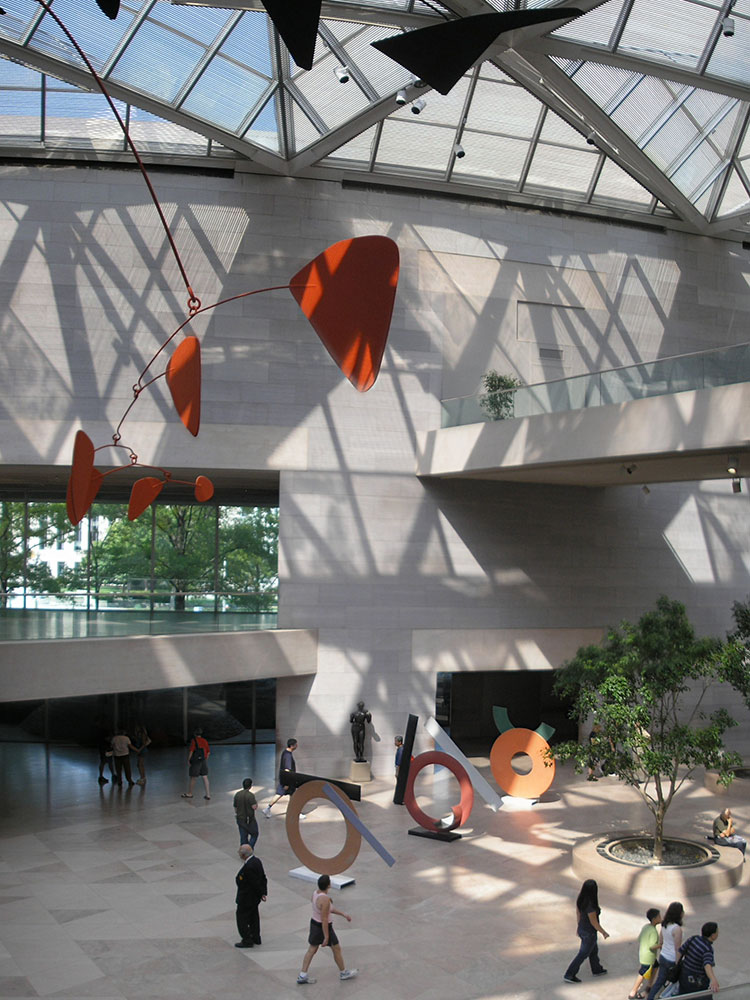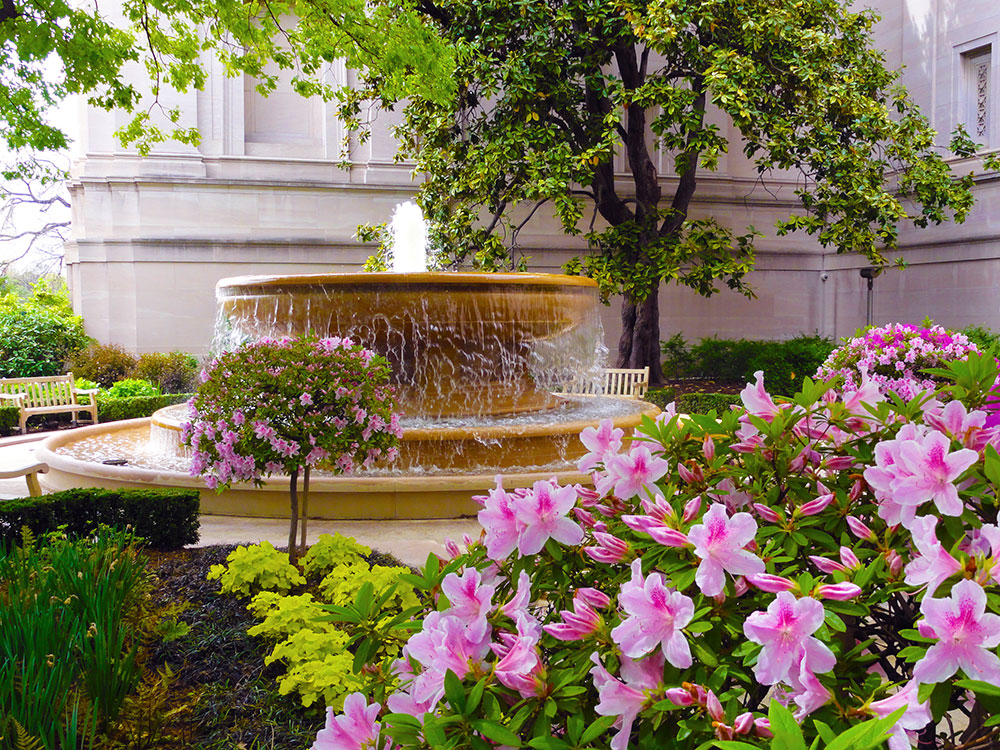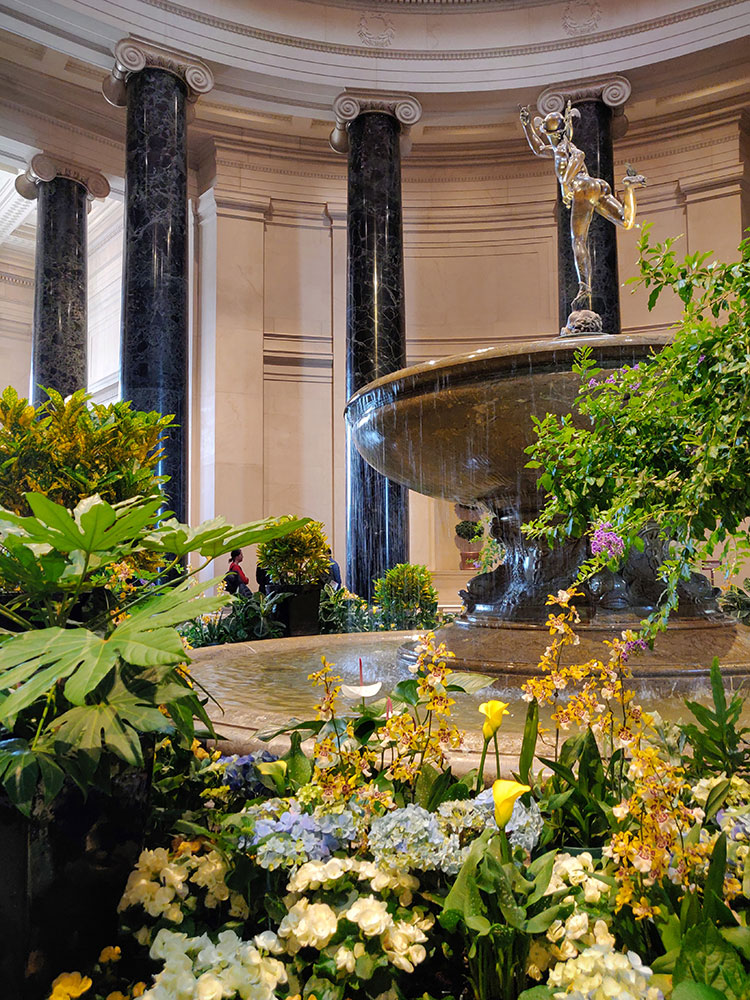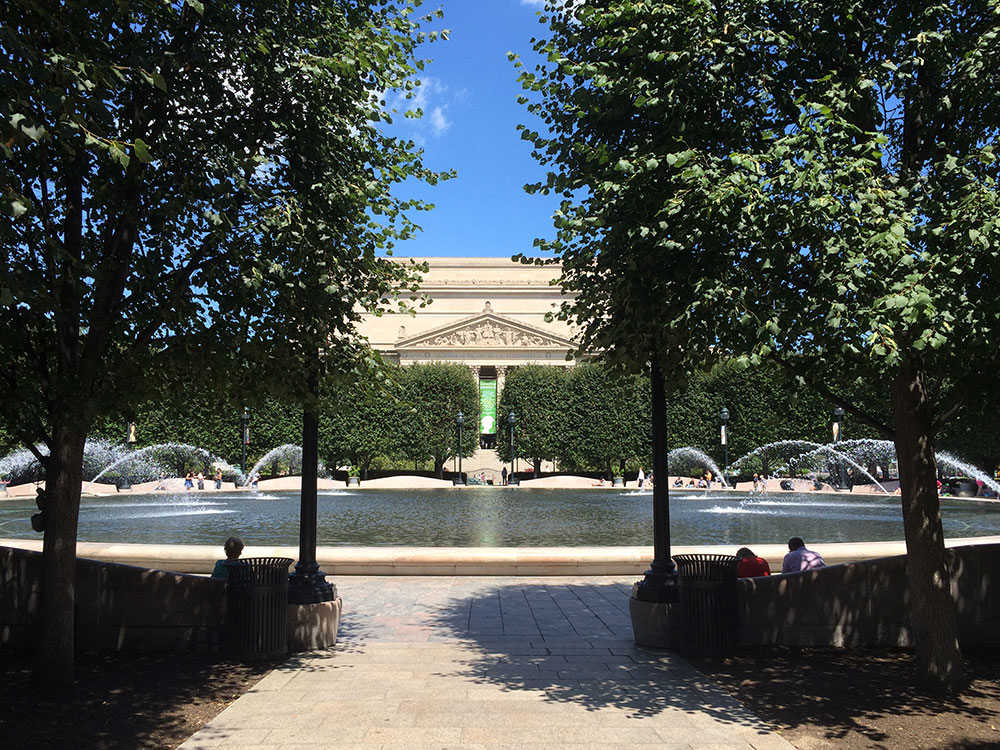Art museum located on the National Mall includes collection of paintings, drawings, prints, photographs, and sculpture traces the development of Western Art from the Middle Ages to the present
General Information
Head southeast on Scott Cir NW toward Rhode Island Ave NW. Exit the traffic circle onto Massachusetts Ave NW. Keep left to stay on Massachusetts Ave NW. Turn right onto 13th St NW. Turn left onto Pennsylvania Avenue NW. Turn right onto 4th St NW. Make a U-turn.
The National Gallery of Art, and its attached Sculpture Garden, is a national art museum in Washington, D.C., located on the National Mall. Open to the public and free of charge, the museum was privately established in 1937 for the American people by a joint resolution of the United States Congress. The Gallery's collection of paintings, drawings, prints, photographs, sculpture, medals, and decorative arts traces the development of Western Art from the Middle Ages to the present, including the only painting by Leonardo da Vinci in the Americas and the largest mobile created by Alexander Calder.
For the breadth, scope, and magnitude of its collections, the National Gallery is widely considered to be one of the greatest museums in the United States of America. In 2021 it attracted 1,704,606 visitors, and ranked fifth on the list of most visited art museums in the world.
The museum comprises two buildings: the West Building (1941) and the East Building (1978) linked by an underground passage. The West Building, composed of pink Tennessee marble, was designed in 1937 by architect John Russell Pope in a neoclassical style (as is Pope's other notable building in Washington, D.C., the Jefferson Memorial). Designed in the form of an elongated H, the building is centered on a domed rotunda modeled on the interior of the Pantheon in Rome. Extending east and west from the rotunda, a pair of skylit sculpture halls provide its main circulation spine. Bright garden courts provide a counterpoint to the long main axis of the building.
The West Building has an extensive collection of paintings and sculptures by European masters from the medieval period through the late 19th century, as well as pre-20th century works by American artists. Highlights of the collection include many paintings by Jan Vermeer, Rembrandt van Rijn, Claude Monet, Vincent van Gogh, and Leonardo da Vinci.
In contrast, the design of the East Building, by architect I. M. Pei, is geometrical, dividing the trapezoidal shape of the site into two triangles: one contains public galleries, and the other houses a library, offices, and a study center. The triangles establish a motif that is echoed throughout the building, realized in every dimension.
The East Building focuses on modern and contemporary art, with a collection including works by Pablo Picasso, Henri Matisse, Jackson Pollock, Andy Warhol, Roy Lichtenstein, Alexander Calder, a 1977 mural by Robert Motherwell and works by many other artists.
The two buildings are connected by a walkway beneath 4th street, called "the Concourse" on the museum's map. In 2008, the National Gallery of Art commissioned American artist Leo Villareal to transform the Concourse into an artistic installation. Today, Multiverse is the largest and most complex light sculpture by Villareal featuring approximately 41,000 computer-programmed LED nodes that run through channels along the entire 200 ft (61 m)-long space. The concourse also includes the food court and a gift shop.
The final element of the National Gallery of Art complex, the Sculpture Garden was completed in 1999 after more than 30 years of planning. To the west of the West Building, on the opposite side of Seventh Street, the 6.1 acres (2.5 ha) Sculpture Garden was designed by landscape architect Laurie Olin as an outdoor gallery for monumental modern sculpture.
The Sculpture Garden contains plantings of Native American species of canopy and flowering trees, shrubs, ground covers, and perennials. A circular reflecting pool and fountain form the center of its design, which arching pathways of granite and crushed stone complement. (The pool becomes an ice-skating rink during the winter.) The sculptures exhibited in the surrounding landscaped area include pieces by Marc Chagall, David Smith, Mark Di Suvero, Roy Lichtenstein, Sol LeWitt, Tony Smith, Roxy Paine, Joan Miró, Louise Bourgeois, and Hector Guimard.
The NGA's collection galleries and Sculpture Garden display European and American paintings, sculpture, works on paper, photographs, and decorative arts. Paintings in the permanent collection date from the Middle Ages to the present. The Italian Renaissance collection includes two panels from Duccio's Maesta, the tondo of the Adoration of the Magi by Fra Angelico and Filippo Lippi, a Botticelli work on the same subject, Giorgione's Allendale Nativity, Giovanni Bellini's The Feast of the Gods, Ginevra de' Benci (the only painting by Leonardo da Vinci in the Americas) and groups of works by Titian and Raphael.
The collections include paintings by many European masters, including a version of Saint Martin and the Beggar, by El Greco, and works by Matthias Grünewald, Cranach the Elder, Rogier van der Weyden, Albrecht Dürer, Frans Hals, Rembrandt, Johannes Vermeer, Francisco Goya, Jean Auguste Dominique Ingres, and Eugène Delacroix, among others. The collection of sculpture and decorative arts includes such works as the Chalice of Abbot Suger of St-Denis and a collection of work by Auguste Rodin and Edgar Degas. Other highlights of the permanent collection include the second of the two original sets of Thomas Cole's series of paintings titled The Voyage of Life, (the first set is at the Munson-Williams-Proctor Arts Institute in Utica, New York) and the original version of Watson and the Shark by John Singleton Copley (two other versions are in the Museum of Fine Arts, Boston and the Detroit Institute of Arts).
The National Gallery's print collection comprises 75,000 prints, in addition to rare illustrated books. It includes collections of works by Albrecht Dürer, Rembrandt, Giovanni Battista Piranesi, William Blake, Mary Cassatt, Edvard Munch, Jasper Johns, and Robert Rauschenberg. The collection began with 400 prints donated by five collectors in 1941. In 1942, Joseph E. Widener donated his entire collection of nearly 2,000 works. In 1943, Lessing Rosenwald donated his collection of 8,000 old master and modern prints; between 1943 and 1979, he donated almost 14,000 more works. In 2008, Dave and Reba White Williams donated their collection of more than 5,200 American prints.
This article uses material from the Wikipedia article "National Gallery of Art", which is released under the Creative Commons Attribution-Share-Alike License 3.0
